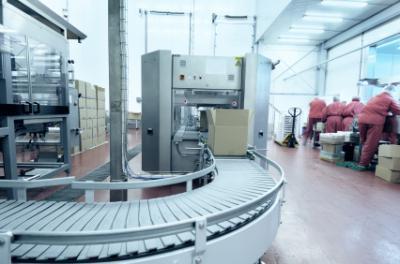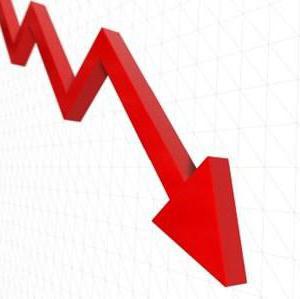Return on assets, capital intensity, capital ratio - the key categories used in the economic analysis of the company. These elements reflect different processes, but at the same time are closely interconnected. To conduct a full economic analysis, it is necessary to determine the return on assets and capital intensity of products in dynamics. Further we consider these categories in more detail. 
General information
What is capital productivity, capital intensity, capital ratio? The first element acts as a generalized parameter of the use of company assets. Return on assets and capital intensity of the enterprise - the reciprocal. The second characterizes the number of assets per ruble of goods released. The capital-labor ratio shows the degree to which the activities of the company's workers are equipped. This category is of particular importance in the analysis. Return on assets, capital intensity, and profitability of a company depend on its size.
Influence factors
Return on assets and capital intensity of fixed assets, as mentioned above, depend on the degree of equipment of the company. The first category is defined as the ratio of the output of finished products to the average annual value of assets. This value is used in the analysis of the level of use of fixed assets, the planned justification for the increase in attracted capacities and production volumes. Among the factors affecting this value, it should be noted:
- The share of the active part of the OS.
- The age composition, structure and improvement of the technological equipment park.
- Operating time, including intensive, machines and more.
At the state level, capital productivity and capital intensity are calculated based on the volume of national income. In industry, the basic quantities are the net, gross and marketable quantities of manufactured products. Return on assets and capital intensity are determined in comparable prices. This allows you to determine the physical volume of manufactured products and assets, accurately analyze the dynamics.
Industry factor
Return on assets / capital intensity of the products of one economic, industrial or transport sector significantly differ from the values defined for another. In this regard, when analyzing the dynamics of the industry, region, country, the corresponding changes in the structure of goods and assets are taken into account. The dynamics are influenced by:
- The volume of output in physical terms and their price.
- The structure and composition of the OS (specific gravity, age characteristics of the active part).
- Price, performance and other characteristics of equipment and machines, their degree of wear.
- The share of unused funds, load level, power and area operation factors.
Other circumstances
If the company operates efficiently, then the value of capital productivity will increase. In addition to the cost of fixed assets and depreciation, it can be affected by:
- Changing the structure of equipment and overhaul of its key elements.
- Planned modernization.
- Changes in the ratio of non-production and production assets.
- Adjustment of capacity utilization due to additions to the product range.
- Change in the volume of output in connection with the impact on the process of market conditions and other circumstances.
As can be seen from the above list, many factors are outside production. But since capital productivity is characterized by high variability, these circumstances directly affect its value. For example, a company has a high level of asset depreciation.This may mean that the commissioning of new information systems may adversely affect capital productivity. This, in turn, is fraught with making incorrect conclusions on the calculations. However, one should not underestimate the potential for capital productivity. After all, with its help, the company is able to independently compare its capabilities with the merits of competing firms. For this, the company will need only open statistics or data published in official sources on the financial statements of other business entities.
Exceptions
It should be remembered that in calculating the capital productivity ratio, a number of changes are not taken into account:
- Downtime of equipment and machinery.
- Structures of industrial OS.
- The efficiency of the equipment.
- Parts of active operating systems.
Return on assets and capital intensity: formulas
The calculation is carried out using two values: the average annual (full) cost of fixed assets and the volume of manufactured products for the same period.
- FD = release of goods / cf. annual rate.
- FE = cf. annual article / release of goods.
Thus, it is clear that capital productivity and capital intensity are inverse quantities. To calculate the degree of equipment the company also uses the average annual cost of fixed assets. The second quantity is the number of employees:
- PV = cf. annual st-st / average number of employees.

The degree of equipment of the company and capital productivity are related through the value of labor productivity. It represents the ratio of the release of goods to the average number of employees. It follows that:
- FD = productivity / capital ratio.
The definition of capital productivity can be implemented as follows:
- ФО = release of goods / initial st-st of fixed assets.
The initial price of assets is determined for manufactured products in relation to the funds invested in it. In addition, the calculation can be carried out as follows:
Increase OS performance
Today, enterprises give quite a lot of attention to the issue of sales of goods. In the framework of fairly fierce competition, pricing occupies a key position in the process of demand formation. But constantly restrain the cost, provide discounts to customers is extremely unprofitable. This can lead to a crisis, as the income received will not cover expenses. As a result, the company will become insolvent. The way out of the situation may be to reduce costs. According to many experts and managers of industrial enterprises, it is possible to reduce costs by reducing fixed costs, constantly increasing output. The last task, as a rule, is solved by attracting new equipment (on lease or credit) and only to a small extent by identifying and using internal reserves.

Undoubtedly, the attraction of new equipment will contribute to an increase in output. But the alleged economic effect those companies that increase capacity to meet the increased demand for goods will receive. It is advisable for other enterprises to search for internal reserves and develop a program for their rational use.
OS turnover efficiency
Return on assets and capital intensity should be balanced. The profitability of the activity will depend on how efficiently the company's resources are used. Currently, there is a not very favorable trend. At many enterprises, there is a decrease in the efficiency of the turnover of fixed assets. The actual level is estimated in dynamics over several years. However, if the return on assets and capital intensity are planned, then they are compared with the planned values. One of the factors influencing the decrease in the effectiveness of assets is their slow development.At the same time, reducing the time for commissioning resources can accelerate their turnover. This, in turn, will slow the onset of obsolescence of the company's assets and increase the effectiveness of its economic activities.
Comprehensive analysis
For its implementation, it is necessary to consider the activities of the company from different angles. That is why in economic analysis, capital productivity and capital intensity are taken into account primarily. The formulas above are used to assess the effectiveness of asset turnover and the amount of resources that need to be spent on their acquisition. Based on the results of the analysis, a set of measures is being developed aimed at increasing the profitability of asset turnover. Among them, in particular, may be provided:
- Increase in the share of equipment.
- Replacing obsolete models with new ones.
- Increase in production efficiency by increasing productivity, eliminating auxiliary unnecessary fixed assets.
- The sale of equipment that is not used or operated is extremely rare.
- The transition to the production of products with higher added value.
- An increase in the number of shifts, the elimination of downtime. This will increase the coefficient of use of computer time.

Evaluation results
Capital productivity and capital intensity of fixed assets are calculated using values that reflect the volume of already manufactured products and the value of the assets involved in the process. Resource efficiency depends on the company's net profit. Its value is compared with depreciation amounts. The result is estimated capital intensity / capital productivity. The profitability of the company will be recognized if depreciation is less than net profit.
Important point
Many managers do not quite clearly understand the need to determine return on assets. However, in practice, its value helps to make various management decisions. For example, knowing the rate of return on assets, the entrepreneur purchases this or that equipment. If the subsequently earned profit is higher than the cost of the acquisition, then the investment can be considered effective. In this regard, we can say that the value of capital productivity serves as a means of insurance and planning for any enterprise.
Dynamics
The level of changes in these indicators will depend, as already noted above, on the degree of equipment of the company. During the intensive re-equipment of labor by modern means, a decrease in capital productivity is noted. But subsequently in the process of developing new tools, its value stabilizes. Moreover, prerequisites are formed for increasing the value. At each stage, there is a limit to the growth of capital-labor ratio, followed by a decrease in capital productivity. One of the necessary conditions is the anticipatory increase in labor efficiency in comparison with an increase in the degree of equipment. At enterprises, measures should be provided that are aimed at increasing capital productivity. For example, for construction companies, the actual solution to the problem may be to increase shift, increase load, improve the organization of labor and the process itself, modernize equipment taking into account the nature of the activity, and so on. Using the absolute difference method, it is possible to determine the influence of factors related to asset turnover:
- Extensive (quantitative) - the sum of the OS.
- Intensive (quality) - capital productivity.

Conclusion
Rational use of fixed assets available at the enterprise allows increasing the volume of consumer goods and the level of national income. Increasing the efficiency of operating the company's own resources eliminates the need to attract additional capital investments.Moreover, an increase in output is achieved in the shortest possible time. Proper use of fixed assets, maintaining capital intensity at the optimum level ensures maximum return on assets, accelerates the production process, reduces costs and reduces the cost of reproduction of new assets. The economic effect of increasing the effectiveness of the turnover of fixed assets is an increase in social productivity.
Capital productivity reflects the amount of goods (or the amount of income) that the company receives from each ruble of fixed assets available to it. By its value, the efficiency of asset turnover is estimated. Capital intensity reflects the amount of funds that need to be invested in fixed assets to obtain the required volume of production. With an improvement in the use of assets, FD increases and FU decreases. If the capital intensity is reduced, then there is a labor saving. In the evaluation process, operating equipment and machines are allocated from the OS. Comparison of percent of plan execution and growth rates per ruble of the cost of the active part of funds and 1 ruble. article of technological resources shows the impact of changes in the structure of production assets on the effectiveness of their operation. Under these conditions, the second value should be higher than the first (if the specific gravity of the OS working group increases).
